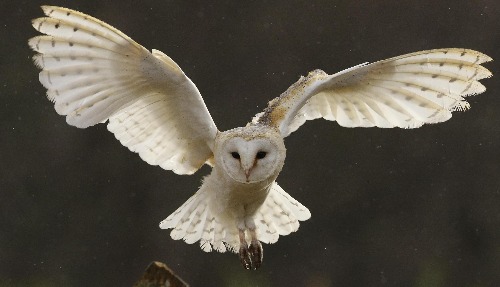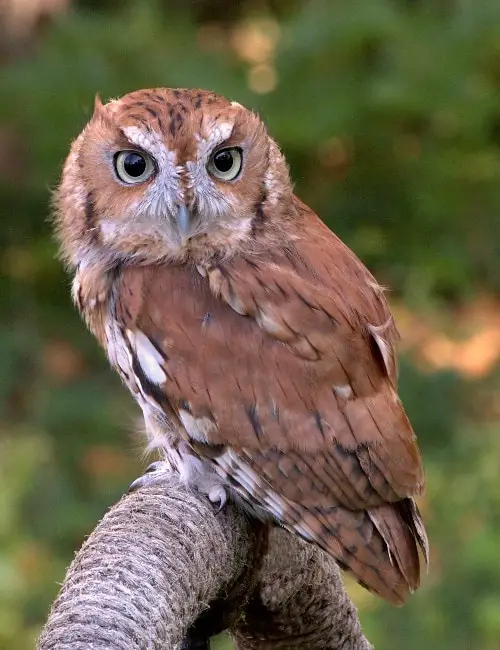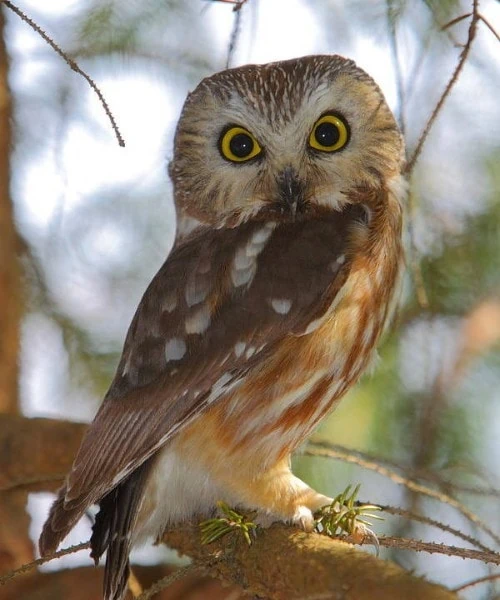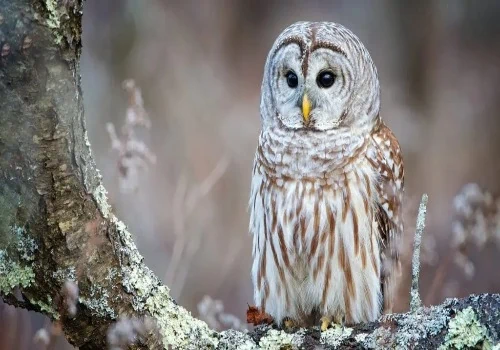Despite being wise and mysterious, owls are pretty popular among bird watchers. They are rarely seen, thanks to their nocturnal lifestyle and camouflage, making them even more mysterious to most folks.
Owls have featured in the legends and myths of a number of cultures. Most common mysteries include the harbinger of prophecy, wisdom, or death omens. These led most bird lovers to learn more about the New Jersey owls.
The Owls in New Jersey
Other than being considered a bad omen in some cultures, owls are known as mysterious, wise, and great creatures by bird watchers. Plus, the fact that they consume whole prey with the head before regurgitating the fur and bones makes them even more intriguing.
Fortunately, North America is home to 18 owl species, with 8 of them being residents of the Garden State.
To increase your chances of finding New Jersey owls, you should visit the woodlands at dusk or dawn. Try and inspect the highest perches on the forest's edge or open grasslands.
Here are the 8 mystical owls of New Jersey:
1. Barn Owls

There are lots of owls flying or perching all over the world, but very few species including this one can be found everywhere except in the desert and polar region. New Jersey alone is blessed with tens of thousands of birds, but the Barn owl is one species that you can never miss along the Delaware Bay and Stone Harbor.
Behavioral Pattern
Strictly nocturnal and ghostly pale, the Barn owl is a silent predator that hunts at night. But they literally enjoy the sound of their voices, so you can always find them listening to their raspy, eerie calls when the sun sets.
Unlike other birds, these exceptionally low-light vision creatures can only use their sight and hearing to find food when it's dark. But their ability to locate the exact position of the prey using sound alone is impeccable.
Its uniqueness doesn't end with how it catches its prey, but also how it feeds as there are very few animals that can swallow their prey and cough some pellets twice every day!
Description
Thanks to their lanky body with whitish belly, chest, face and buffy upperparts, this New Jersey owl can easily hide in quiet places during the day. They have short tails and long rounded wings with a round face.
Distribution
Unfortunately, despite its wide distribution, it could become an endangered species very soon since its population is dwindling at a very fast rate. But still, scientists have managed to identify more than 46 different Barn Owl races worldwide, which means that there are a few tribes that haven't been described yet.
Plus, the ones in North America weigh twice as much as the ones from the Galapagos Islands.
Pro Tip: Providing a sturdy, high-quality best owl nesting box will make nesting for this owl less stressful and easier to maintain in the long run!
Fun Fact: Barn owls also make up the population of owls in Massachusetts alongside the Eastern Screech Owl (featured below) and Great Horned Owl, to name a few!
2. Eastern Screech Owl

You can never mention camouflage without mentioning owls and detecting the Eastern screech owl against the bark of a tree is almost impossible thanks to the spotted and patterned red and gray feathers. But if you've seen a Robin, then you can differentiate it from other birds.
After all, this NJ resident owl has a considerable head with little-to-no neck and is about the same size as a Robin but bulkier.
Habitat
This NJ owl can be found in parks and woods all over the state and if lucky you may just find them sunning on tree cavities during the cold days. And being raptors, they rarely make nests; instead they live in abandoned woodpecker nests and dead trees. Funny enough, they don't even add anything to the nest.
Behavioral Pattern
Most raptors eat birds and this one is no exception, so you can always find them perched near a mob of songbirds. All you have to do is listen to their descending whinny calls and vibrating trills to find them.
Diet
It feeds on small animals like reptiles, insects, mammals, amphibians, and birds.
3. The Great Horned Owl
Most owls are migratory creatures, but only one species can be found in New Jersey all year long and that is the Great Horned Owl.
Description
Hoot owl, which is its local name, has huge ear-like feather tufts on their head and thick bodies. Its gray-brown body with mottled patterns helps it hide from everyone. Another feature that helps them stand out is the white patches on their chests.
Habitat
As one of the most common North American owls, the Great horned owl can be found in a wide range of habitats, including grasslands, cities, deserts, and forests.
Diet
The hoots are potent hunters that prey on any small mammal and birds even bigger than themselves.
They even prey on other raptors like owls, peregrine hunters, and ospreys.
Watch This!
4. Snowy Owl
As its name suggests, the Snowy Owl is as white as snow, but what makes it stand out are the brown or black markings on its body and yellowish eyes. These owls of New Jersey are as big as crows.
This species can be found in NJ in winter, but spotting them against the white snow can be a bit challenging. If you're lucky, you can find them at the Island Beach State Park's high dunes and the Jersey shore along the Atlantic coast in winter.
Behavioral Pattern
Since spotting these NY owls in snow can be challenging, most bird watchers depend on the shrill whistle or hoarse croak they produce during the breeding period.
Unlike other owls, these diurnal creatures spend the 24hours of summer daylight in the Arctic hunting.
Diet
Like all raptors, they hunt some small mammals, particularly lemmings. But in winter, they consume some birds while in flight, like the waterfowls or ptarmigans, and turn to squirrels, rabbits, birds, and rodents.
5. Barred Owl
Out of all the 18 species found in the United States, only the Barred owl produces the loud barking "hoo hoo calls."
Description
The barred owl is covered by some brown and white patterned feathers, but when they spread their wings, you'll be graced by some beautiful horizontal stripes on their upper chests and backs.
Most owls come with ear tufts, but not this one; instead, it has round heads, black eyes, and a rounded tail.
Behavioral Pattern
All raptors are territorial creatures; therefore, most bird watchers take advantage of this factor and go looking for them at night. And to attract them, you only have to imitate their calls and they will come out to investigate.
Diet
These raptors love hunting small creatures like birds, rabbits, and squirrels by simply perching on high places and looking for their prey.
Habitat
They love inhabiting streams, rivers, and lakes or in forested regions. Plus, their nests can be found in the tree cavity.
Fun Fact: You can learn more about the owl species and why do owls hoot by visiting your local owl shelters.
Watch This!
6. Long-Eared Owl
If you've been to NJ in winter then you know that these are the most common owls in New Jersey. It has a medium-sized, slender body that's almost the same size as crows, and it comes with patterned brown and white feathers with huge buff dark ear tufts.
Behavioral Pattern
Since its colors are visible in the open, these nocturnal owls love roosting in a dense forest where it's well camouflaged. But it hunts over open pastures where it flies low while listening and looking for movements.
Unlike other owls, this species is rarely heard, but they only make noises during the breeding season.
The Long-Eared Owls produce some soft low hoots, shrieks, meows, and whistles during the breeding season.
Diet
The Long-Eared Owls prey on small mammals like rabbits, young rats, mice, and voles.
7. Short-Eared Owls
Most owls come to breed in New Jersey, but the short-eared owls do the opposite, they breed in Canada and northern parts of the US before migrating to South Jersey in winter.
Description
These medium-sized birds are almost the same size as crows, but they have smaller ear tufts.
They have white, brown, and black mottled coloring with black-rimmed yellowish eyes and pale faces. Plus, their broad wings have rounded edges and short tails.
Behavioral Pattern
Unlike the most preying birds, the short-eared owls tend to hunt during the day, but mostly at dusk and dawn. Luckily, they aren't too vocal, but they do make some hooting noises during the mating season. But when attacked they can defend their nests by producing some barks, whines, and screams.
Diet
The Short-eared owl loves flying low while searching for small creatures like mice and voles.
8. Northern Saw-Whet Owl

If you thought that there were no small-sized raptors, then you haven't seen the Northern saw-whet owls.
These tiny owls resemble robins in size; they have huge heads and small bodies.
They have yellow eyes, a spotted head, and a mottled brown body with a whitish face.
Behavioral Pattern
Being nocturnal creatures they occupy dense forests where they hunt small mammals, particularly mice. The Northern Saw-Whets love nesting in some tree cavities that have been left behind by other birds like the Pileated Woodpeckers. Unfortunately, they don't add any nesting material to the nest boxes before laying their eggs.
Frequently Asked Questions
Which Type of Owl Can Be Found on Long Island?
Long Island is home to several owls, including screech owls. In fact, 75% of the screech owls are the red type. You can find over 100 breeding pairs in the eastern parts of this island.
Where Can I Find Owls in NJ?
Owls can be found in most of the parks protected by the New Jersey Conservation Foundation. The best place for owl seeing is in Meadowlands and the Liberty Park area. These places resemble tundra, and all 8 species of NJ can be found here.
Conclusion
New Jersey is home to the 8 owl species in North America, but you can also find the other species migrating through this state. Therefore, if you love owls, then you should visit this beautiful state. But before leaving your home, you should know the difference between the different owls living in NJ.

